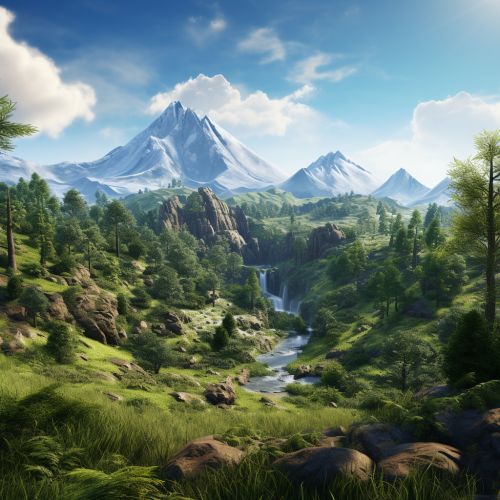Climate
Introduction
Climate is the long-term pattern of weather in a particular area. It is measured by assessing the patterns over the course of decades to millennia and beyond. The climate of an area includes seasonal temperature and rainfall averages, as well as wind patterns and other meteorological elements. The Earth's climate system is a complex, interactive system consisting of the atmosphere, land surface, snow and ice, oceans and other bodies of water, and living organisms.
Climate Classification
The most commonly used classification scheme was the Köppen system, developed by German climatologist Wladimir Köppen in the early 20th century. This system recognizes five major climatic types; each type is designated by a capital letter.


A - Tropical moist climates: These climates are characterized by high temperatures year round and a significant amount of rainfall.
B - Dry climates: These climates experience extremely low amounts of rainfall, leading to desert-like conditions.
C - Moist mid-latitude climates with mild winters: These climates have warm to hot summers and cool to mild winters, with rainfall throughout the year.
D - Moist mid-latitude climates with cold winters: These climates have warm summers and cold winters, with rainfall throughout the year.
E - Polar climates: These climates are characterized by extremely cold temperatures and very short summers.
Climate Change
Climate change refers to significant changes in global temperatures and weather patterns over time. While climate has varied throughout history, the extreme changes seen recently are of particular concern. Scientists widely agree that Earth's climate is warming, causing changes that can affect the balance of temperature, precipitation, and sea level.
Climate Models
Climate models, also known as general circulation models or GCMs, use mathematical equations to characterize how energy and matter interact in different parts of the ocean, atmosphere, and land. These models are used by scientists to better understand the Earth’s climate and how it might change in the future.
Climate and Ecosystems
Climate plays a crucial role in determining the biodiversity and productivity of ecosystems. Changes in climate can affect the types of species that can survive in an ecosystem. Warmer temperatures can cause species to move to cooler areas, such as higher latitudes or elevations.
Climate and Human Society
Climate has a profound impact on human society and our ability to grow food, maintain freshwater supplies, manage wildfire risk, and even prevent the spread of diseases. Many of these impacts are expected to intensify as the greenhouse effect continues to alter our climate.
